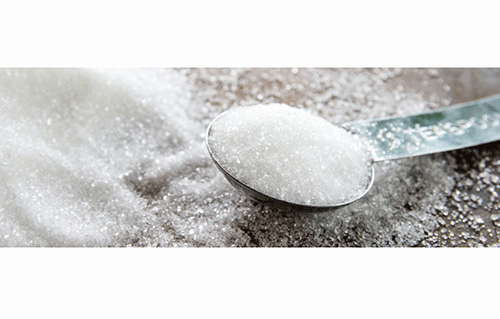Namibian white sugar prices are set to increase by 20% from 7 April 2022, thereby adding more pressure on consumers already faced with rising food prices.
According to the Namibia Agricultural Trade Forum (NATF), the increase is unavoidable due to the unavailability of refined sugar in the Southern African Customs Union (SACU), coupled with high tariffs in place from global suppliers.
In a statement, NATF chairperson Ian Collard explained that Namibian sugar packers are faced with extreme difficulties in obtaining sufficient white sugar from SACU suppliers.
“Traditionally, Namibia, along with Botswana and Lesotho, who are all net importers of sugar, have always been able to import sufficient quantities of white and brown sugar from Eswatini, and in particular South Africa. However, in recent years, supply from these two sugar-producing countries has not only become more costly, but has also started to lessen each year from around December to March when the annual sugar production season ends,” Collard added.
This state of affairs has forced non-sugar-producing countries like Namibia to source sugar outside SACU. Collard stated that a massive SACU tariff protection of effectively 40% exists to protect South African and Eswatini sugar producers. This arrangement makes importing sugar from non-SACU countries non-viable and extremely costly for Namibian sugar packers.
In addition, recent riots, strikes and reduced sugar harvests in South Africa and Eswatini, the only sugar producers in SACU, means these producers have run out of refined sugar before the start of the new sugar-harvesting season. This means neither of the two countries can supply Namibia with refined sugar for at least the next two months.
Meanwhile, New Era recently reported that Namibia would not be spared from rising global food prices, set to increase drastically for the rest of 2022. This is as global Covid-19 recovery efforts have been significantly set back by the Russian invasion of Ukraine, which in turn has further exacerbated supply chain delays and severe oil prices spikes.
Just last week, Namibia’s largest grain-processing company Namib Mills confirmed an increase in April of wheat flour, pasta, bread, rice, maize meal, instant porridge and sugar.
During the past five years, Namibia imported most of its wheat requirements from Russia. And, between them, Ukraine and Russia produce roughly 20% to 30% of all corn, maize and wheat consumed around the world.
Now, the ongoing conflict between Russia and Ukraine has amplified already high food and energy costs.
“The ripple-effect from this may be in the form of a global decrease in the supply of wheat, prompting high demands and possible supply constraints, which could subsequently lead to upward price adjustments. Although countries in the first and second world have declared sanctions against Russia as a means to mitigate the crisis and ensure the basic right to human life, third world countries are already feeling the supply disruptions,” read the statement from Namib Mills spokesperson, Selma Moongo.
Also, industry experts believe the most significant impacts of the conflict in Eastern Europe will be felt in Africa, where the continent still imports 30% of wheat from Ukraine and Russia.
The FAO Food Price Index (FFPI), a measure of the monthly change in international prices of a basket of food commodities, averaged 140.7 points in February 2022, up 5.3 points (3.9%) from January, and as much as 24.1 points (20.7%) above its level a year ago. This represents a new all-time high, exceeding the previous top of February 2011 by 3.1 points.


